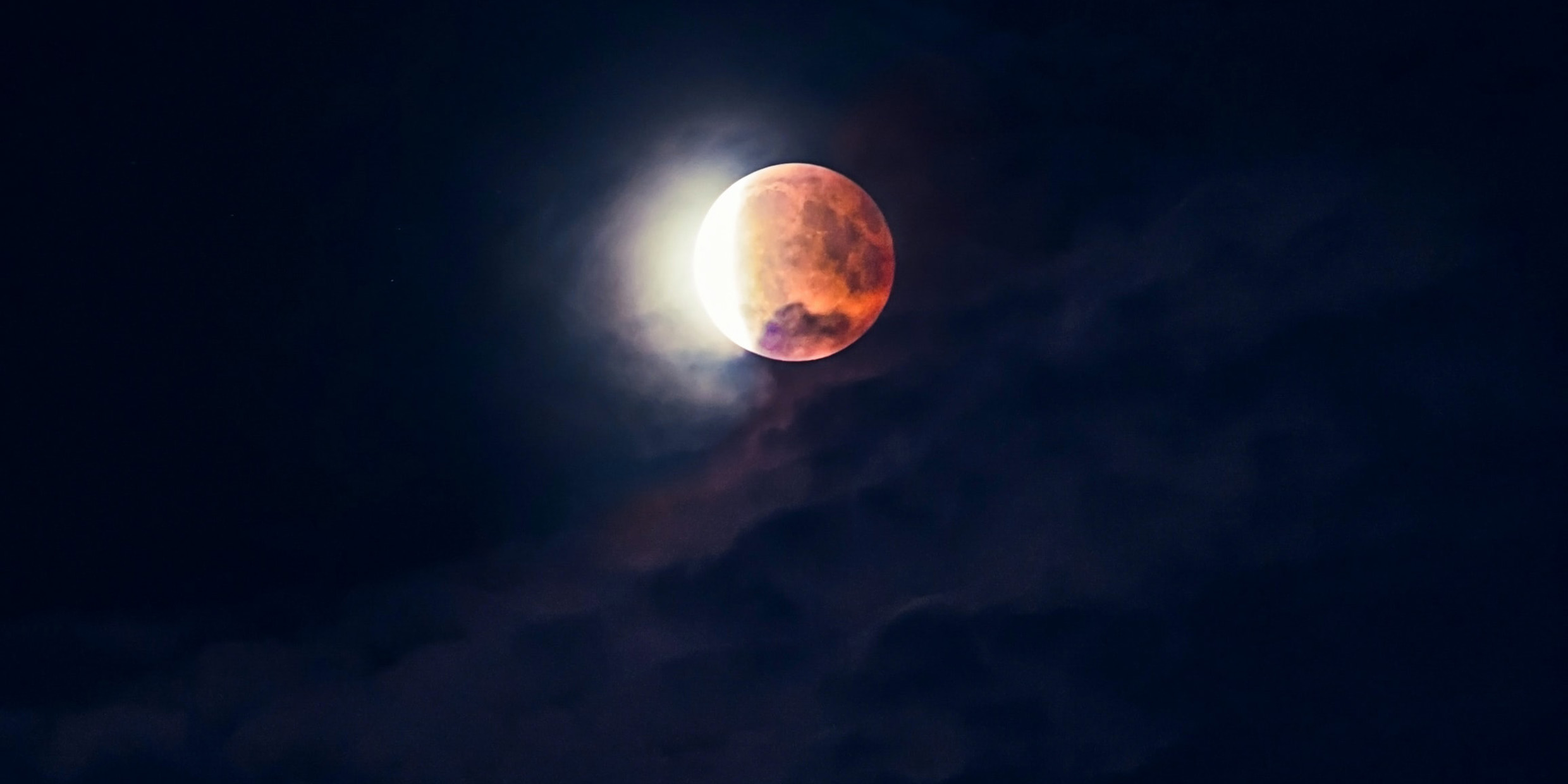Originally published 31 January 2000
EXUMA — It has been a week and a half since the total lunar eclipse, but the beauty of it is still on my mind.
New England had a snowstorm on the night of the eclipse. I was lucky enough to be under clear tropic skies here in the Bahamas. It is a place with few artificial lights and ideal for stargazing, but as the moon rose full at sunset its light overwhelmed all but the brightest stars.
Straight up out of the sea it came, as if in a hurry to keep its appointment with Earth’s shadow. It is winter, and the sun is near its southernmost excursion in the sky, above the Tropic of Capricorn. The full moon is always opposite the sun, which placed it in the north, above the Tropic of Cancer. Exuma sits astride the Tropic of Cancer, so the moon climbed directly up the sky towards our zenith.
As it rose, its own monthly motion caused it to slip backwards towards the Earth’s shadow, which was climbing the sky behind it.
Earth wears its shadow like a tall, thin wizard’s cap. The cap fits snugly on the Earth’s brow, and reaches out to a vertex three times further than the moon. This is Shelley’s “pyramid of night which points into the heavens,” and every place outside the shadow is in the light of the sun. As it climbed, the moon caught the sun’s light full on its face.
At the distance of the moon’s orbit — a quarter-of-a-million miles — the Earth’s shadow is two-and-a-half times wider than the moon, a tapering column of darkness that the moon passes through on nights of an eclipse.
At 10 p.m., the moon’s bright eastern limb nudged into darkness. We watched for an hour as the moon pushed ever more deeply into the shadow, until finally only a sliver a radiance remained. As the moon surrendered its brightness, more and more stars appeared in the sky.
When the last direct rays of reflected sunlight were extinguished, we gasped. The dome of night was paved with a myriad of twinkling stars, and the Milky Way arched overhead from north to south. Just to the east of the eclipsed moon, the Beehive in Cancer glowed faintly, a cluster of hundreds of stars individually too dim to be seen with the naked eye.
And the moon! A dusky tangerine, lit by a delicate wash of red-orange light that seeped into the shadow by refraction through the Earth’s atmosphere. The refracted light is brightest near the edge of the shadow and faintest in the middle, so the illumination of the moon’s face was uneven. This gave a powerful illusion of sphericity — and closeness — as if the moon were a luscious fruit hanging just above our heads that we might reach up and pluck.
I watched the eclipse with my Bahamian friend Felix. He was dazzled by its beauty. Felix is a religious man, and he drew from the spectacle a lesson about stewardship. “All this beauty, up there and down here, there must be a reason for it,” he said. “It was made for us. We are responsible for it. We are in charge.”
One need not share Felix’s theology to agree with his conclusion.
The previous evening we had attended a lecture by two ornithologists — Paul Dean of the Bahamas National Trust and Dave Ewert of the Michigan chapter of the Nature Conservancy — on the Kirtland’s warbler. This little yellow-breasted, tail-flicking bird breeds exclusively in one area of jack pine forest in north central Michigan and winters exclusively in the Bahamas. Each fall, as the temperature drops in Michigan, the warblers make a beeline for the islands. In the spring, it’s straight back to the jack pines.
There are only about 800 breeding pairs of Kirtland’s warblers, and a few thousand birds altogether. The future of the species is in peril. The birds will nest only under Michigan jack pines, and only under jack pines that are not too tall. This means they need patches of forest that are occasionally harvested or burnt over. Dave Ewert joked: “You might think that a bird that’s so finicky about were it breeds deserves to go extinct.”
Of course, these two men are giving much of their lives to insuring that the Kirtland’s warbler does not become extinct. The bird’s existence is threatened by human encroachments upon its breeding range, and its continued existence can only be insured by human stewardship.
When my friend Felix spoke of stewardship, I thought of the two ornithologists — of different races and nationalities — and what an extraordinary thing it is that someone of our species should care so much about these nondescript little birds. And I thought too of the few thousand Kirtland’s warblers wintering in these islands under a delicious tangerine moon.



